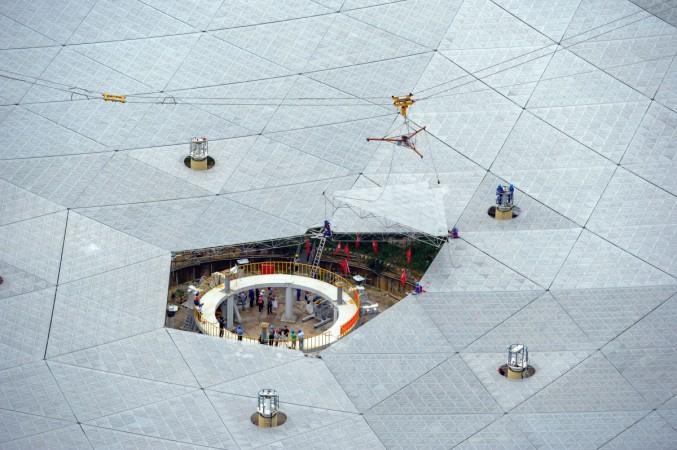
China completed the installation of the world's largest radio telescope on Sunday morning with the final piece of the 4,450 triangular panels being fitted in the middle of the big dish.
According to Xinhua News Agency, the telescope is all set to be launched in September this year. The fitting of the final panel to the reflector, which is the size of 30 football fields, started at 10:47 a.m. and lasted for an hour.
Around 300 people, including builders, experts, science fiction enthusiasts and reporters, gathered at Pingtang County's Karst valley, located in the southwestern province of Guizhou, to witness the installation.
Work on the telescope commenced in 2011 and cost around 1.2-billion-yuan ($180 million).
"The telescope is of great significance for humans to explore the universe and extraterrestrial civilizations... I hope scientists can make epoch-making discoveries," Liu Cixin, a renowned science fiction writer and winner of the 2015 Hugo Award for Best Novel, was quoted by the agency as saying.
Scientists will start debugging and trial observation of the 500-meter Aperture Spherical Telescope (FAST), Zheng Xiaonian, deputy head of the National Astronomical Observation (NAO) under the Chinese Academy of Sciences that built the radio telescope, was quoted as saying. He added that the project can search for stranger objects to get a better understanding of the universe's origin and escalate the global hunt for extraterrestrial life.
Zheng further added that the telescope would be the global leader for the next decade or two.
The telescope would undergo further adjustment during the initial 2-3 years following its completion during which Chinese scientists would use it for early-stage research. Following that, it would be open to scientists worldwide, Director of the NAO Radio Astronomy Technology Laboratory Peng Bo said.
The telescope will dwarf Puerto Rico's 300-meter Arecibo Observatory following its completion and would be 10 times more sensitive than the steerable 100-meter telescope near Bonn in Germany, Peng added.
Five of the seven FAST receivers were made in China itself, while the other two were co-produced by Chinese, Australian and American institutions.









